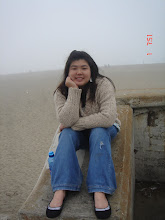
Mosquito in Thailand
In my country, Thailand, have a lot of mosquitoes, which are insects in the family Culicidae. They have a pair of scaled wings, a pair of halters, a slender body, and long legs. The females of most mosquito species suck blood from other animals, which has made them the most deadly disease vector known, killing millions of people over thousands of years and continuing to kill millions per year by the spread of infectious diseases. Most mosquitoes are most active around sunrise and sunset, which is why you see a peak in activity around these times, but some mosquitoes are active all times of the day and night. There are several species active in Thailand. Some species seek shelter during the heat of the day.
Most mosquitoes travel along the ground and are fairly energy conserving. People are usually aware of seeing only mosquitoes near eye level or on their arms, but most mosquito bites are on exposed lower extremities. Mosquitoes eat flower nectar and some other things. Only female mosquitoes bite humans, as they need the protein to make their eggs.
 The mosquito goes through four separate and distinct stages of its life cycle and they are as follows: Egg, Larva, pupa, and adult. Each of these stages can be easily recognized by their special appearance. There are four common groups of mosquitoes living in the Bay Area. They are Aedes, Anopheles, Culex, and Culiseta.
The mosquito goes through four separate and distinct stages of its life cycle and they are as follows: Egg, Larva, pupa, and adult. Each of these stages can be easily recognized by their special appearance. There are four common groups of mosquitoes living in the Bay Area. They are Aedes, Anopheles, Culex, and Culiseta. Egg : Eggs are laid one at a time and they float on the surface of the water. In the case of Culex and Culiseta species, the eggs are stuck together in rafts of a hundred or more eggs. Anopheles and Aedes species do not make egg rafts but lay their eggs separately. Culex, Culiseta, and Anopheles lay their eggs on water while Aedes lay their eggs on damp soil that will be flooded by water. Most eggs hatch into larvae within 48 hours.
Larva : The larva (larvae - plural) live in the water and come to the surface to breathe. They shed their skin four times growing larger after each molting. Most larvae have siphon tubes for breathing and hang from the water surface. Anopheles larvae do not have a siphon and they lay parallel to the water surface. The larva feed on micro-organisms and organic matter in the water. On the fourth molt the larva changes into a pupa.
Pupa: The pupal stage is a resting, non-feeding stage. This is the time the mosquito turns into an adult. It takes about two days before the adult is fully developed. When development is complete, the pupal skin splits and the mosquito emerges as an adult.
Adult: The newly emerged adult rests on the surface of the water for a short time to allow itself to dry and all its parts to harden. Also, the wings have to spread out and dry properly before it can fly.
The egg, larvae and pupae stages depend on temperature and species characteristics as to how long it takes for development. For instance, Culex tarsalis might go through its life cycle in 14 days at 70 F and take only 10 days at 80 F. Also, some species have naturally adapted to go through their entire life cycle in as little as four days or as long as one month..
Most species are nocturnal or crepuscular (dawn or dusk) feeders. During the heat of the day most mosquitoes rest in a cool place and wait for the evenings. They may still bite if disturbed. Mosquitoes are adept at infiltration and have been known to find their way into residences via deactivated air conditioning units.

Mosquito bites are a nuisance anywhere. Anyone who lives in the tropics, however, should become familiar with mosquito borne diseases that so far have tended to be located in the tropics.
Thailand is not a particularly mosquito infested country, and tends to be pretty average for a tropical country. Mosquito borne illnesses exist here, but are not a common infliction upon expats, especially in urban areas. Decades ago, things were different, and government eradication efforts are mainly to credit for this turnaround. Nonetheless, there are still occasional reports of an expat or traveler getting a mosquito borne illness, especially near the borders with Cambodia and Burma.
My Mapping




 Ocean tides flow through the Golden Gate four times a day -- twice coming in and twice going out. The quantity of salt water in motion between high and low tides averages 390 billion gallons.
Ocean tides flow through the Golden Gate four times a day -- twice coming in and twice going out. The quantity of salt water in motion between high and low tides averages 390 billion gallons. In August 1933, a Portland-bound ship, the Sidney M. Hauptman, veered off course in a dense fog and crashed into a construction trestle, setting back the project by about a month.
In August 1933, a Portland-bound ship, the Sidney M. Hauptman, veered off course in a dense fog and crashed into a construction trestle, setting back the project by about a month.







